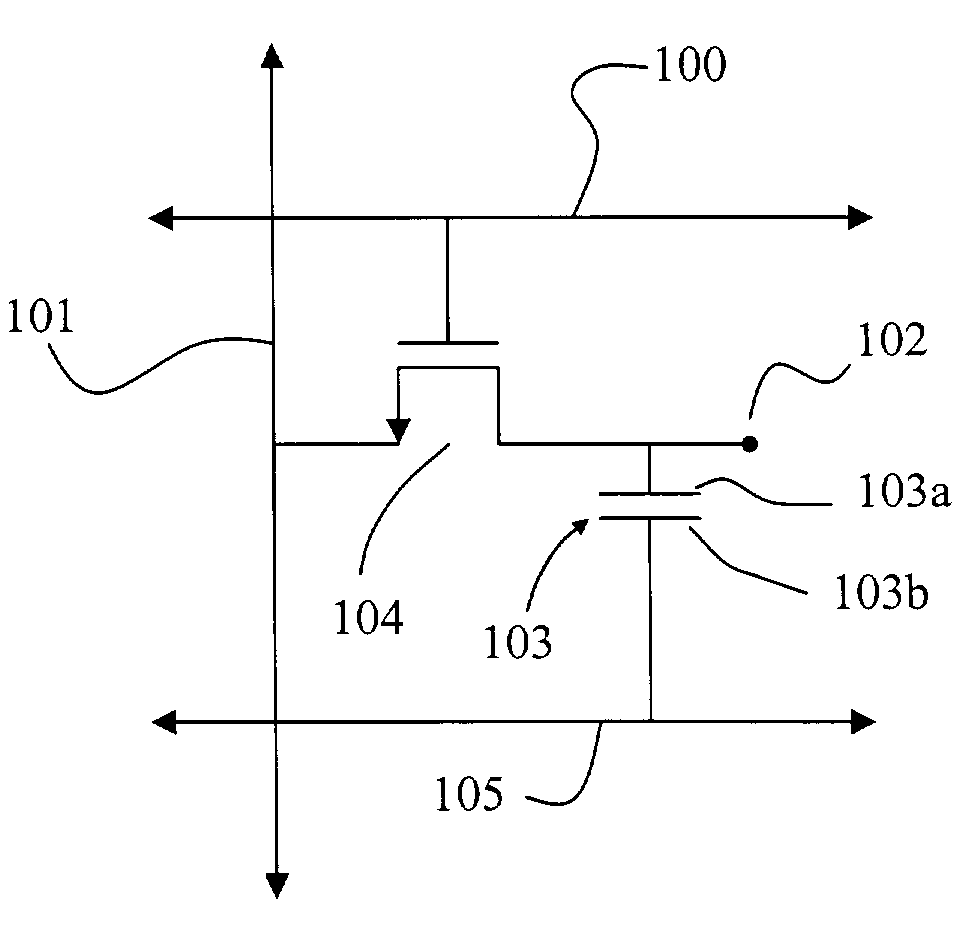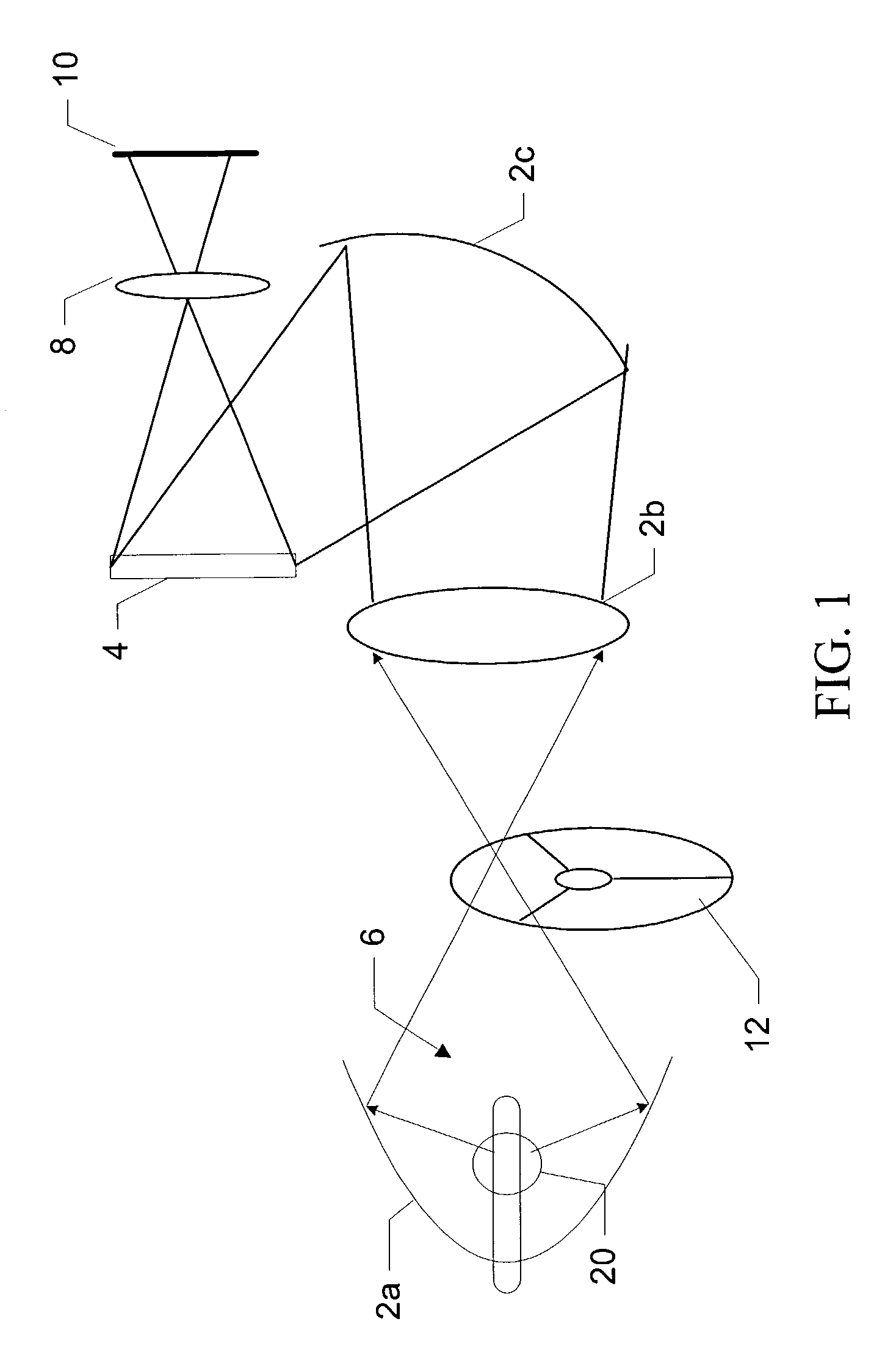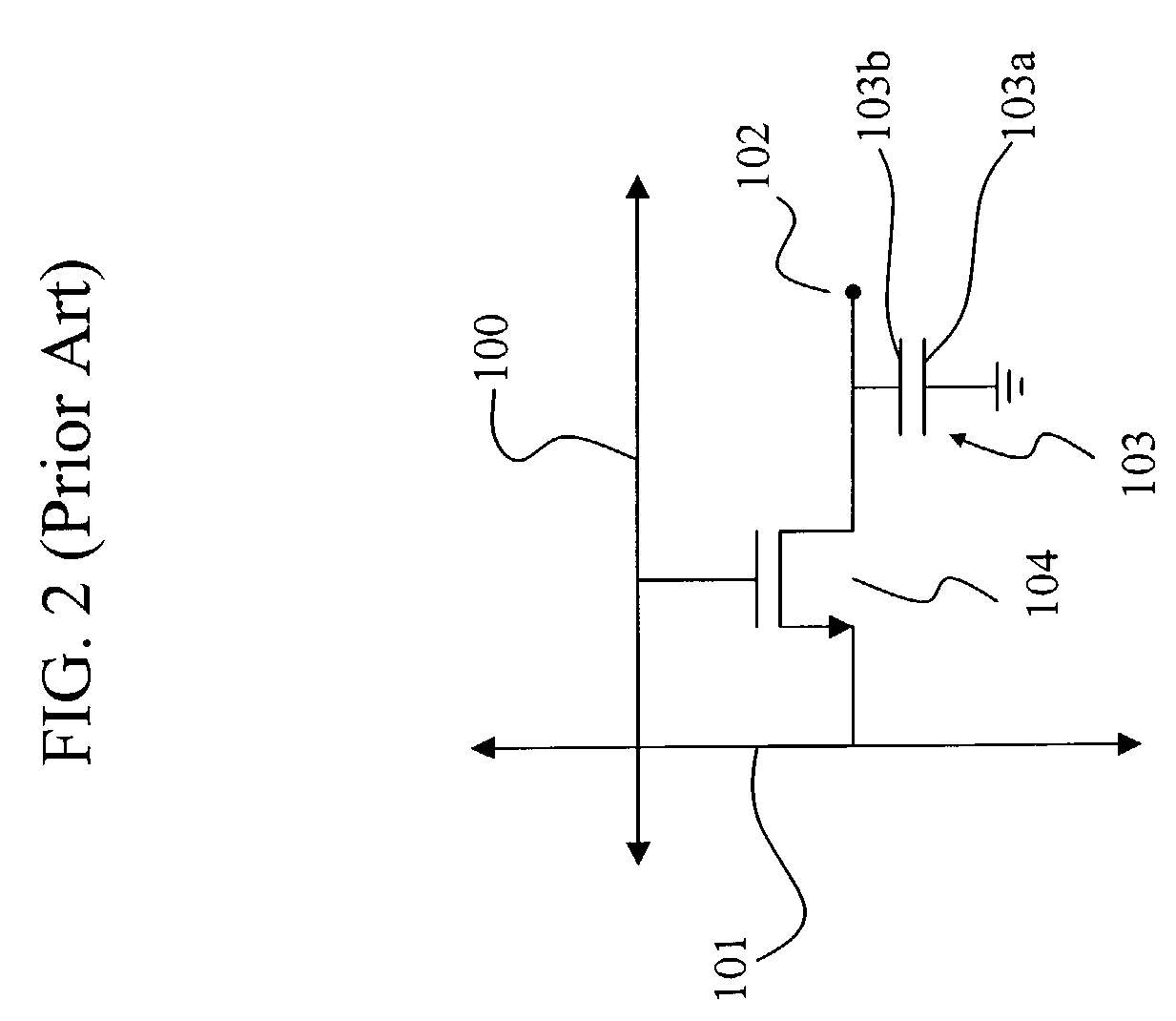Spatial light modulator with charge-pump pixel cell
a technology of charge-pumping and pixel cells, applied in the field of spatial light modulators, can solve the problems of large crts and lcds, the limitations of conventional crts and lcds become apparent, and the weight of large crts is very large and expensiv
- Summary
- Abstract
- Description
- Claims
- Application Information
AI Technical Summary
Benefits of technology
Problems solved by technology
Method used
Image
Examples
Embodiment Construction
[0035]FIG. 2 is an illustration of a prior art DRAM cell circuit, whereas FIG. 3 is an illustration of a cell circuit of the present invention. As can be seen in both figures, each pixel contains a pass transistor 104 and a storage capacitor 103, as well as a wordline signal 100 for enabling access to a row of cells and a bitline signal 101 for reading and writing data to a column of cells. The cell's state is stored as a high or low voltage on the storage node 102. In a conventional DRAM illustrated in FIG. 2, first plate 103a of the storage capacitor is connected to the drain of the pass transistor. And the second plate node of the storage capacitor 103 is connected to a fixed supply voltage such as Vdd, Ground, or some intermediate supply voltage such as Vdd / 2 as is shown in FIG. 2. In the present invention illustrated in FIG. 3, the second capacitor plates of pixels in each row are connected to a ‘pump’ signal 105.
[0036]A simplified cross section of the circuit as implemented in...
PUM
| Property | Measurement | Unit |
|---|---|---|
| voltage | aaaaa | aaaaa |
| voltage | aaaaa | aaaaa |
| stored voltage | aaaaa | aaaaa |
Abstract
Description
Claims
Application Information
 Login to View More
Login to View More - R&D
- Intellectual Property
- Life Sciences
- Materials
- Tech Scout
- Unparalleled Data Quality
- Higher Quality Content
- 60% Fewer Hallucinations
Browse by: Latest US Patents, China's latest patents, Technical Efficacy Thesaurus, Application Domain, Technology Topic, Popular Technical Reports.
© 2025 PatSnap. All rights reserved.Legal|Privacy policy|Modern Slavery Act Transparency Statement|Sitemap|About US| Contact US: help@patsnap.com



